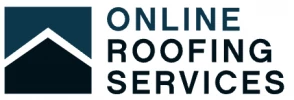Late updated: 27 Jun 2024 20:06
Written by: Oliver Bennett
Latest Trends In UK Roof Design For 2024: Innovations and Styles
The evolution of roof design in the UK for 2024 is set to transform our homes in exciting and innovative ways. Energy-efficient materials and integrated solar roofing are revolutionising the industry, offering sustainable solutions that lower heating and cooling costs. These trends are not just functional but also enhance the aesthetic appeal of our houses, making them a perfect blend of beauty and practicality.
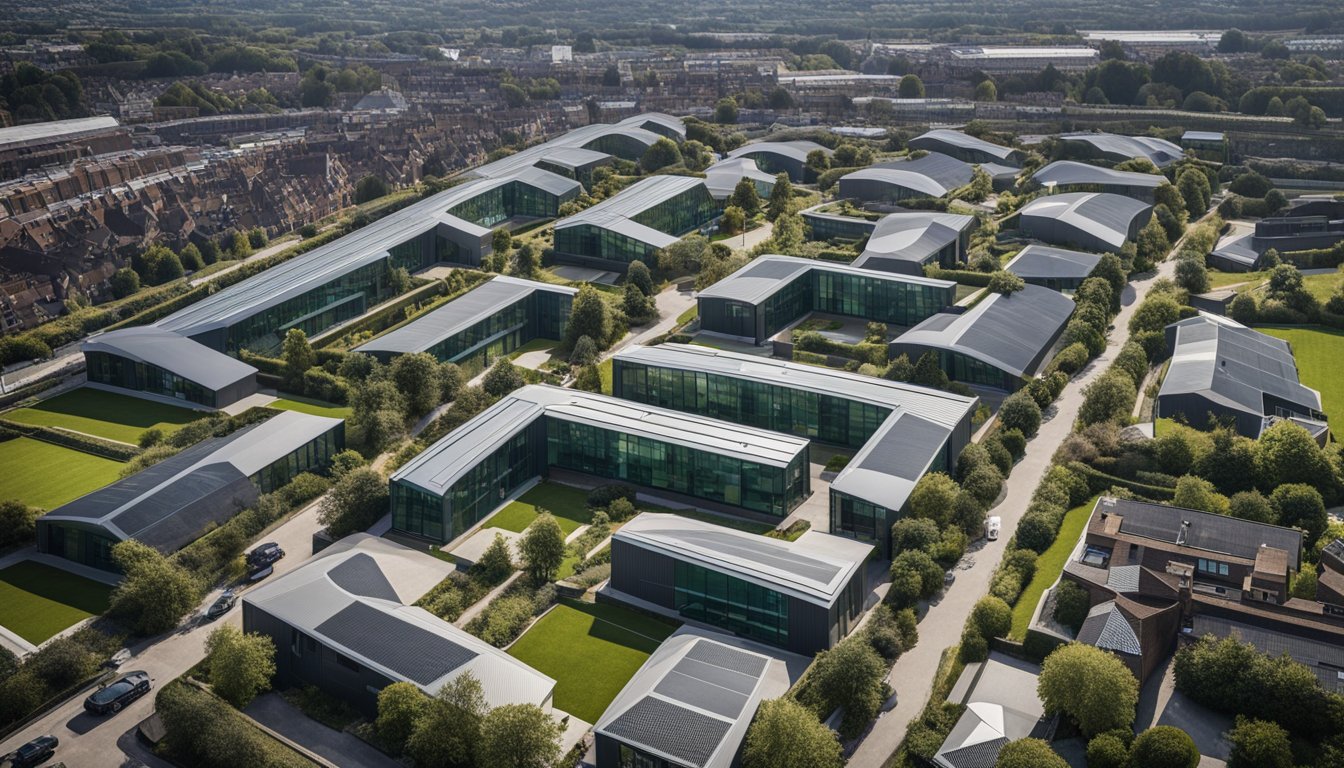
Adding to these innovations, metal roofing is making a striking comeback, providing a visually appealing and highly durable option for modern homes. This trend, coupled with advancements like self-cleaning and self-healing roofs, underscores how technology is propelling the roofing industry forward. These features significantly reduce maintenance concerns, ensuring that our homes remain in top condition with minimal effort.
Exterior design is embracing personalisation and unique architectural styles. Homeowners in the UK are now focusing more on how the outside of their homes stands out, with roofing playing a pivotal role in this transformation. By choosing cutting-edge designs and sustainable materials, we can achieve a remarkable fusion of tradition and modernity in our homes.
Key Takeaways
- Energy-efficient roofing materials are gaining popularity.
- Metal roofing is making a visually striking comeback.
- Technological advancements reduce roof maintenance concerns.
Innovations in Roofing Materials and Technology
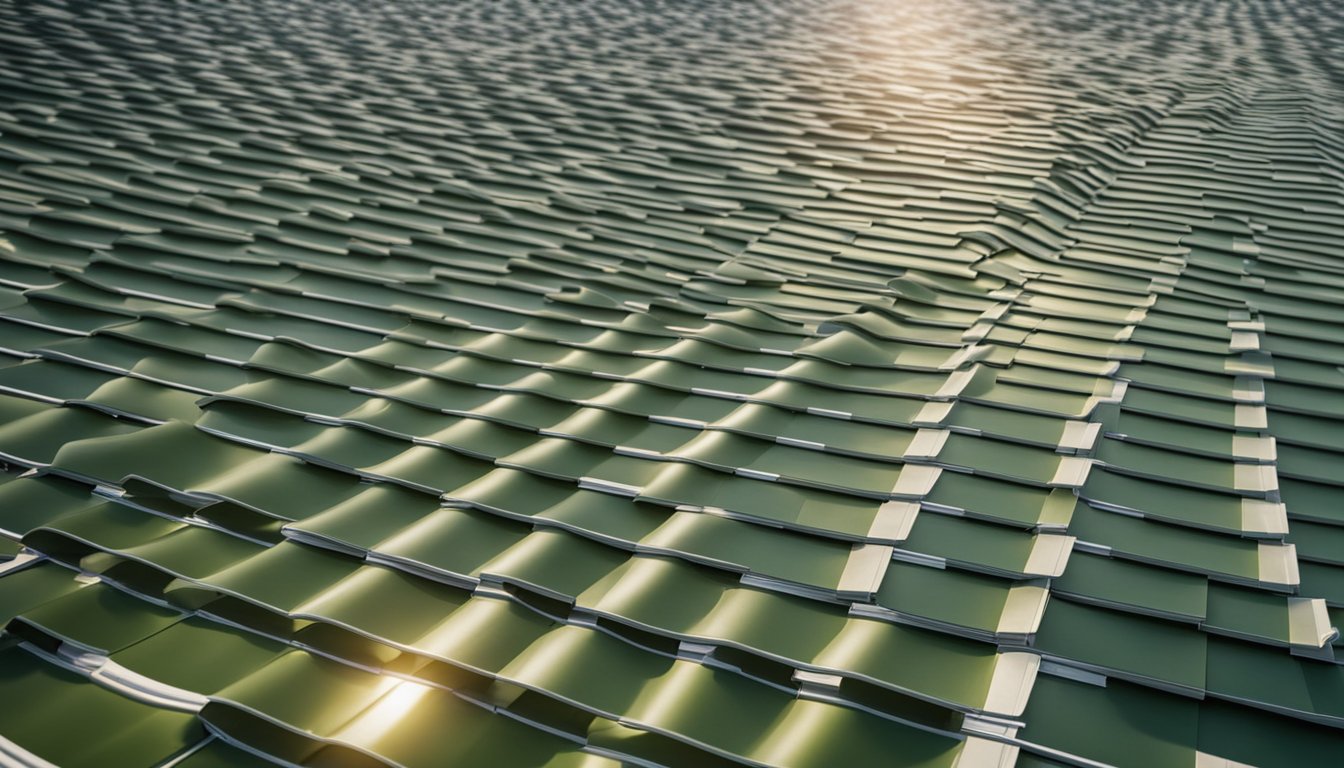
In 2024, the roofing industry in the UK is experiencing pivotal changes. We're seeing considerable advancements in sustainable roofing solutions, solar roofing technologies, and the use of drones and augmented reality (AR) in roof inspection and installation processes. These innovations not only enhance performance but also contribute to energy efficiency and eco-friendliness.
Sustainable Roofing Solutions
Sustainable roofing materials are increasingly becoming the norm. These include green roofs, which feature vegetation layers that provide insulation and reduce urban heat. Another effective option is recycled materials such as rubber and plastic, which lower waste and are durable.
3D printing technologies are also making their mark by producing custom-designed roofing components that minimise material waste. Such innovations ensure that sustainability goes hand in hand with cutting-edge performance. By incorporating these materials, roofs not only become more eco-friendly but also exhibit improved resistance to environmental stressors.
Advancements in Solar Roofing
Solar roofing has evolved far beyond traditional solar panels. Solar shingles are now seamlessly integrating into the design of the roof, enhancing both aesthetics and functionality. These shingles convert sunlight into electricity, providing a sleek alternative to bulky panels.
Additionally, modern solar roofs are designed with energy efficiency in mind. They are optimised to maximise energy capture and are often paired with smart home systems for enhanced control and monitoring. This allows homeowners to reduce their carbon footprint while lowering energy costs. With improvements in both efficiency and design, solar roofing is more accessible and attractive than ever.
Emerging Use of Drones and AR in Roofing
Drones are revolutionising the way we inspect and maintain roofs. Equipped with high-resolution cameras, they provide detailed aerial views, identifying potential issues without the need for ladders or scaffolding. This not only increases safety but also allows for quicker assessments.
Augmented Reality (AR) is being used in combination with AI to enhance roof design and installation processes. AR can map out roofing projects, offering a simulated view of the final output. This technology assists in precision and planning, reducing errors and material wastage. The integration of drones and AR into roofing not only streamlines operations but also opens new possibilities for innovation.
These advancements indicate that the UK roofing industry is on a forward trajectory, integrating new technologies that address a range of practical and environmental concerns. From sustainable materials to high-tech solutions, the future of roofing is both exciting and transformative.
Design Trends and Architectural Considerations
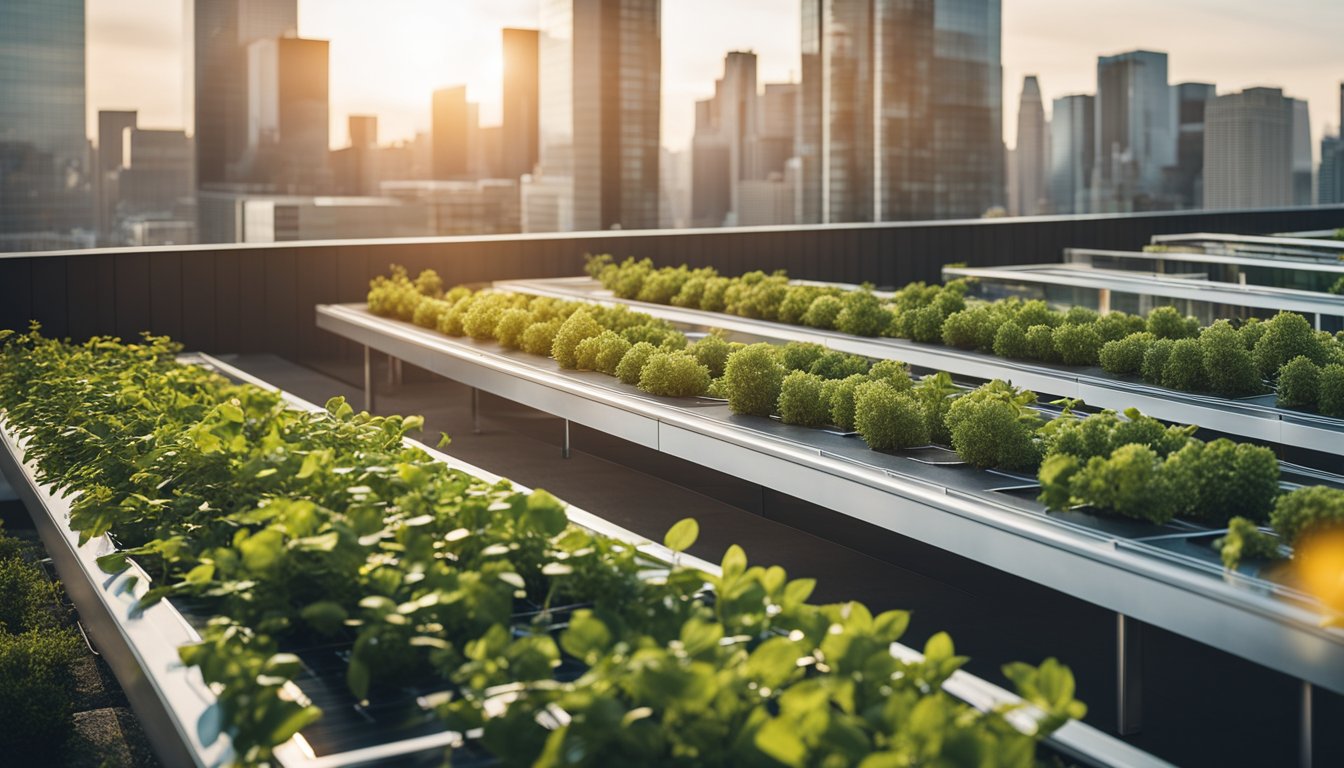
In 2024, UK roof design is rapidly evolving to incorporate both functional and aesthetic elements. Architects and homeowners are prioritising sustainability, durability, and visual appeal while adapting to the changing climate.
Integrating Functionality and Aesthetics
Functionality and aesthetics go hand-in-hand in modern roof design. For instance, integrating solar panels seamlessly into the roofing material enhances energy efficiency while maintaining visual appeal. Metal roofs, known for their durability and low maintenance, are becoming more popular as they can be designed to mimic traditional roofing styles.
We also see an increase in cool roofing technologies with reflective coatings that help reduce heat absorption. This not only lowers cooling costs but also combats the urban heat island effect. Specialised insulation materials are being used to improve air quality and energy efficiency.
Adapting to Climate and Weather Extremes
Adapting roofing designs to cope with extreme weather is critical. Using materials that can withstand extreme weather events improves the roof's longevity and resilience. For example, metal and tile roofs offer excellent durability against hailstorms and high winds.
Innovative designs also include pitched roofs that effectively handle heavy rainfall, reducing the risk of leaks. Flat roofs with enhanced drainage systems are another trend, particularly in urban settings where space utilisation is maximised. These designs address both the practical needs and the aesthetic preferences of today's homeowners and builders.
Policies and building codes are evolving to ensure roofs can handle climate fluctuations. It's essential to work with a professional roofer who understands local weather patterns and building codes to achieve the best results.
Colour and Texture Choices in Roofing
Colour and texture choices in roofing significantly impact both aesthetics and functionality. Light-coloured roofs with reflective properties are gaining traction as they help in reducing cooling costs by reflecting sunlight. These "cool roofs" are practical in urban areas battling the heat island effect.
Roof textures and patterns are also evolving, with options that mimic natural materials like wood and stone becoming popular. These choices add a unique charm to modern homes, aligning with diverse architectural styles.
Dark colours, which absorb more heat, are often preferred in colder climates to help minimise heating costs. The balance between aesthetic appeal and energy efficiency is driving these decisions. Opting for colours and textures that complement the overall architectural design of the home can greatly enhance its value and visual impact.
Frequently Asked Questions
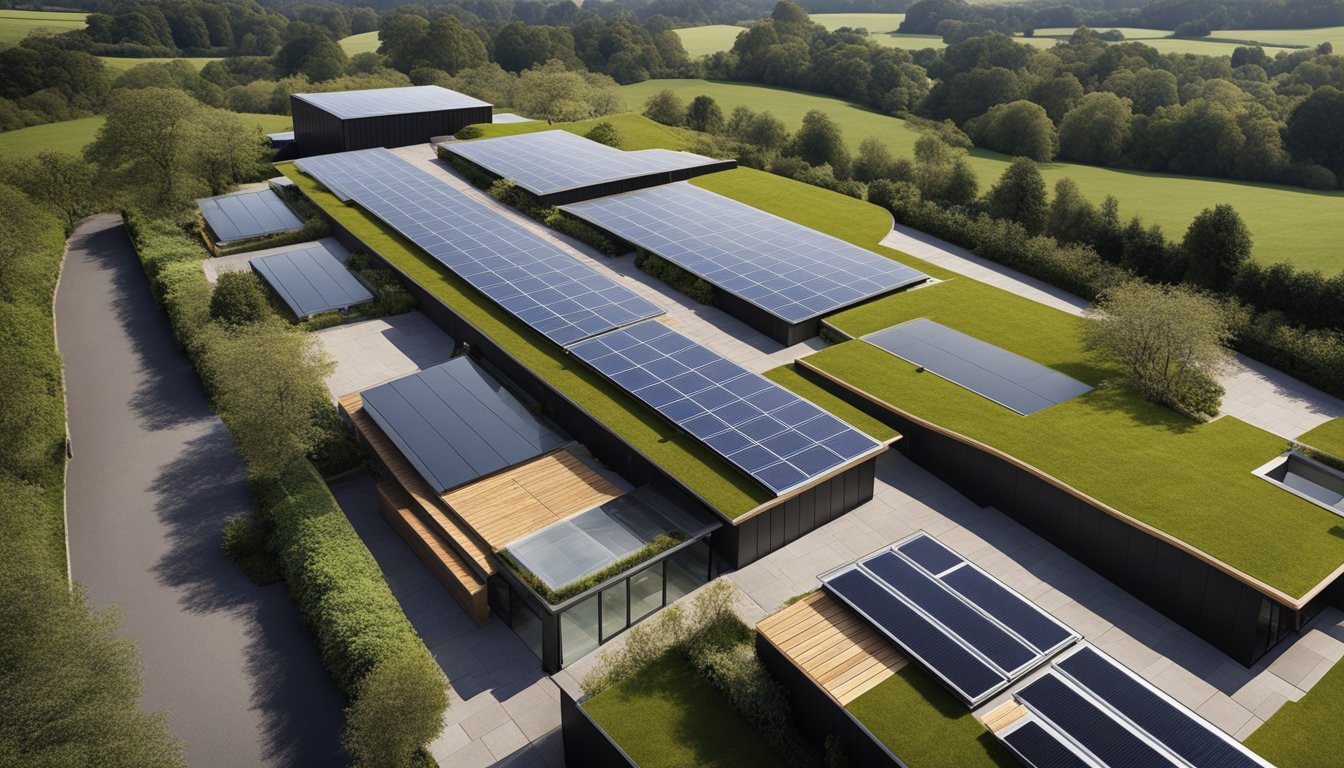
Our exploration into the latest roofing trends in the UK for 2024 highlights several key areas, including innovative design styles, advancements in sustainable technology, and preferred materials for energy efficiency.
What are the emerging styles in residential roofing for 2024?
We see a significant shift towards designs that enhance curb appeal whilst being functional. Homeowners are opting for eye-catching combinations that blend traditional aesthetics with modern technology. Unique architectural features are now being integrated into roofing designs to make homes stand out.
How has sustainable roofing technology advanced this year?
Sustainable materials and practices are at the forefront of roofing advancements. We now have roofing options that not only reduce environmental impact but also offer enhanced durability and energy efficiency. The trend includes utilising recycled materials and incorporating green roofs to support urban biodiversity.
What materials are currently preferred for energy-efficient roofing?
The move towards energy-efficient homes has popularised materials like metal roofing and solar-integrated designs. Metal roofs are known for their longevity and reflectivity, helping to lower heating and cooling costs. Solar panels are increasingly being incorporated into roof structures, providing renewable energy solutions.
Are there any innovations in flat roofing systems for commercial buildings?
The commercial sector is seeing advancements in flat roofing systems, with the use of high-performance materials that offer superior insulation and durability. Products like single-ply membranes and liquid-applied roofing systems are gaining traction for their ease of installation and low maintenance requirements.
How are roofing regulations impacting design choices in 2024?
New regulations are pushing us towards adopting materials and practices that meet higher standards of energy efficiency and sustainability. Builders and designers are now more focused on complying with these regulations, which is driving the use of advanced roofing materials and innovative design solutions to achieve compliance.
What roofing solutions are leading in urban multi-storey developments?
For urban multi-storey buildings, lightweight, durable materials are essential. Green roofs and solar installations are becoming standard to optimise space usage and energy generation. These solutions not only comply with urban planning regulations but also contribute to the sustainability of high-density areas.
